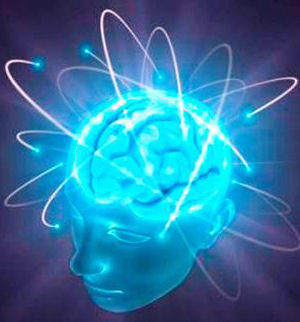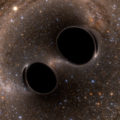
Incorporating the recent discovery of quantum vibrations inside brain neurons, a new assessment of a controversial 20-year-old theory of consciousness presents compelling evidence for the idea that consciousness derives from very fine scale activities inside brain neurons. The new review, by scientific heavyweights Stuart Hameroff and Sir Roger Penrose, appears in the journal Physics of Life Reviews. Penrose and Hameroff go on to suggest that manipulation of these deep levelmicrotubule vibrations could provide treatments for a range of mental, neurological, and cognitive conditions.
The theory under review, known as “orchestrated objective reduction” (Orch OR), was put forward by Penrose and Hameroff in the mid-1990s. It proposes that quantum vibrational computations in microtubules (major components of a cell’s structural skeleton) are “orchestrated” (Orch) by synaptic inputs and memory, and terminated by Penrose’s “objective reduction” (OR).
Orch OR was harshly criticized from its inception, as the brain was considered too “warm, wet, and noisy” for such seemingly delicate quantum processes. However, recent research has now shown warm quantum coherence in plant photosynthesis, bird brain navigation, and brain microtubules. In particular, the discovery of warm temperature quantum vibrations in microtubules by a research group led by Anirban Bandyopadhyay in Japan, goes a long way to corroborating Penrose and Hameroff’s original theory. Penrose says his and Hameroff’s new paper updates the evidence and clarifies Orch OR quantum bits as helical pathways in microtubule lattices.
“Did consciousness evolve from complex computations among brain neurons, as most scientists assert? Or has consciousness, in some sense, been here all along, as spiritual approaches maintain?” ask Hameroff and Penrose. “This opens a potential Pandora’s Box, but our theory accommodates both these views, suggesting consciousness derives from quantum vibrations in microtubules, protein polymers inside brain neurons, which both govern neuronal and synaptic function, and connect brain processes to self-organizing processes in the fine scale, ‘proto-conscious’ quantum structure of reality.”
Penrose and Hameroff will explore their theories further tomorrow during a session on “Microtubules and the Big Consciousness Debate” at the “Brainstorm Sessions,” a public three-day event in Amsterdam. They will also engage skeptics in a debate on the nature of consciousness, while fellow brainbox Bandyopadhyay will demonstrate microtubule vibrations from active neurons playing Indian musical instruments.
Related:
Discuss this article in our forum
Brain scans hint at root of consciousness
What is the material basis of consciousness?
Consciousness: Big brains not necessary
Rhythmic nature of consciousness probed


















Comments are closed.